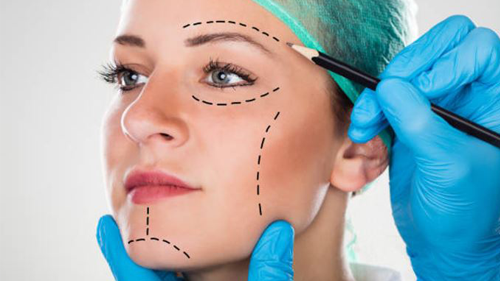
The effects of gravity, sunlight and facial mimics such as smiling, chewing or squinting for years become more prominent on our face by aging. We look younger and healthy when our skin looks more well-rounded. However, subcutaneous tissues that give us a younger and succulent appearance to the complexion lose their integrity over time, resulting in wrinkles in the areas where movements of muscles occur. But, dermal fillers used for aesthetic purposes give your face a look full of youth and health.
Which filling material do you use?
There are various products used as a filling material. Nowadays, hyaluronic acid is the most commonly used filler, and it is available in different brands produced by different companies such as Juvéderm, Surgiderm, Restylane and Teosyal. We prefer to use Juvéderm for our patients.
Are there different fillers available?
There are many different fillers available. They can be divided into three based upon their longevity:
- Temporary fillers: Hyaluronic acid, the most commonly used at present, is the most reliable filler although it is a temporary one. Its longevity varies between 8 and 10 months.
- Long-lasting fillers: They include Radiesse, which contains calcium hydroxyapatite and Sculptra which contains poly-L-lactic acid. They can last up to 2 years.
- Permanent fillers: As the longevity of fillers goes up, their reliability comes down. That is why we believe that permanent fillers are risky and we do not use them in our routine practice. These fillers include plastic, methyl methacrylate or fluid silicone.
Why is hyaluronic acid most favored?
Hyaluronic acid is a naturally occurring substance already found in the tissues in our body. Externally applied hyaluronic acid preparations are similar to that exist naturally in our body. Therefore, it can be regarded as a natural substance. It is not associated with any allergic reactions.
Are dermal fillers permanent?
Unfortunately no. As we mentioned above, the longevity of dermal fillers varies between 8 and 10 months, which, in fact, allows flexibility for the procedure.
Where can I get the hyaluronic acid administration?
It can be administered in the doctor’s office. It doesn’t interfere with your daily life. You can immediately return to your normal life.
Is hyaluronic acid injection painful?
Although hyaluronic acid preparations also include anesthetics that can relieve the pain during the procedure, you may have a little pain in the injection area during the administration of the filler. Anesthetic creams are used to help reduce the pain in the injection area. Local anesthesia can be applied for lip and deep wrinkle injections that may be associated with more pain.
Which facial areas can be treated by fillers?
Facial fillers are most frequently applied to the deep creases between cheeks and lips. Other common areas include the vertical lines between the brows and corners of the mouth. Crow’s feet and fine clefts on lips are treated by a fine dermal filler while a thicker dermal filler is used for jawline, cheekbones, and cheeks to enhance the shape of the face.
Are fillers used for areas other than the face?
Fillers can also be used for augmenting breasts and buttocks or body-shaping. If the breast augmentation requested is not much, and no surgical intervention is required, then fillers can be used. However, it is less favored since fillers are temporary and costly.
What complications can be expected following a filler injection?
The main risk of filler injections is to end up with an exaggerated and unnatural appearance. This effect will be temporary when you confront such an unsatisfactory result, a very rare situation when you are in experienced hands. Other than that, the patient may develop an allergic reaction to hyaluronic acid although this is very rare. Infection can also be observed, though rare.

